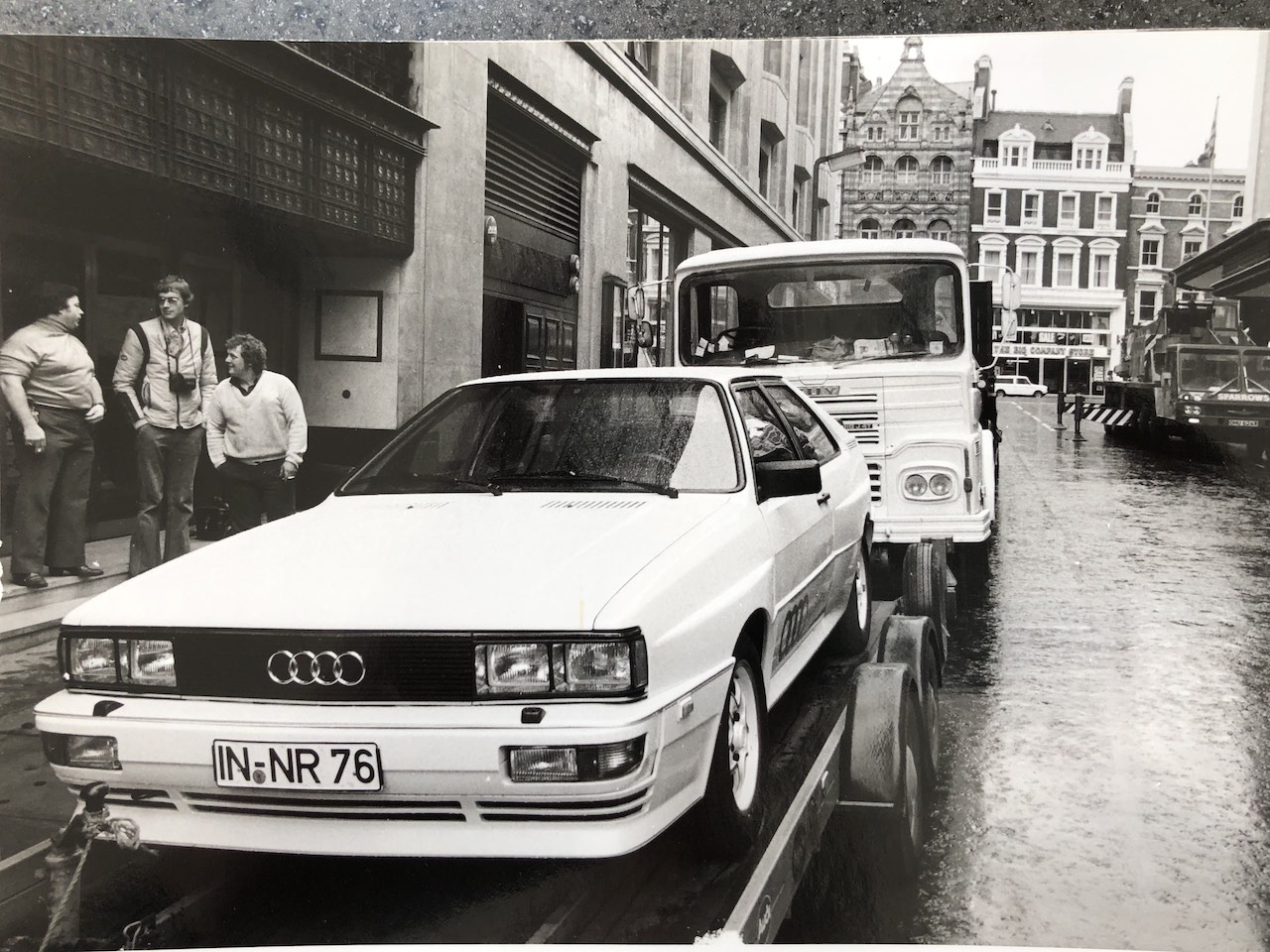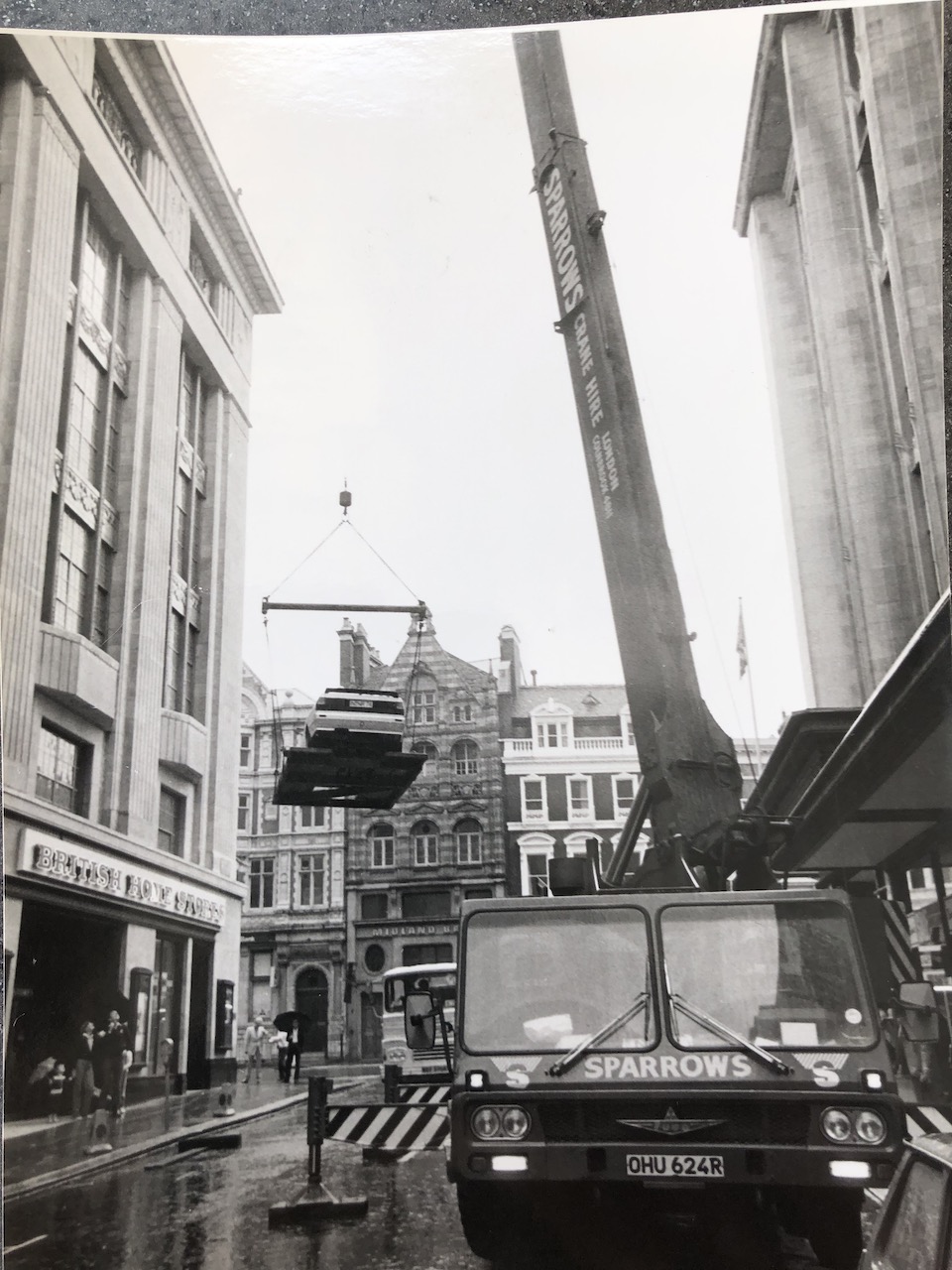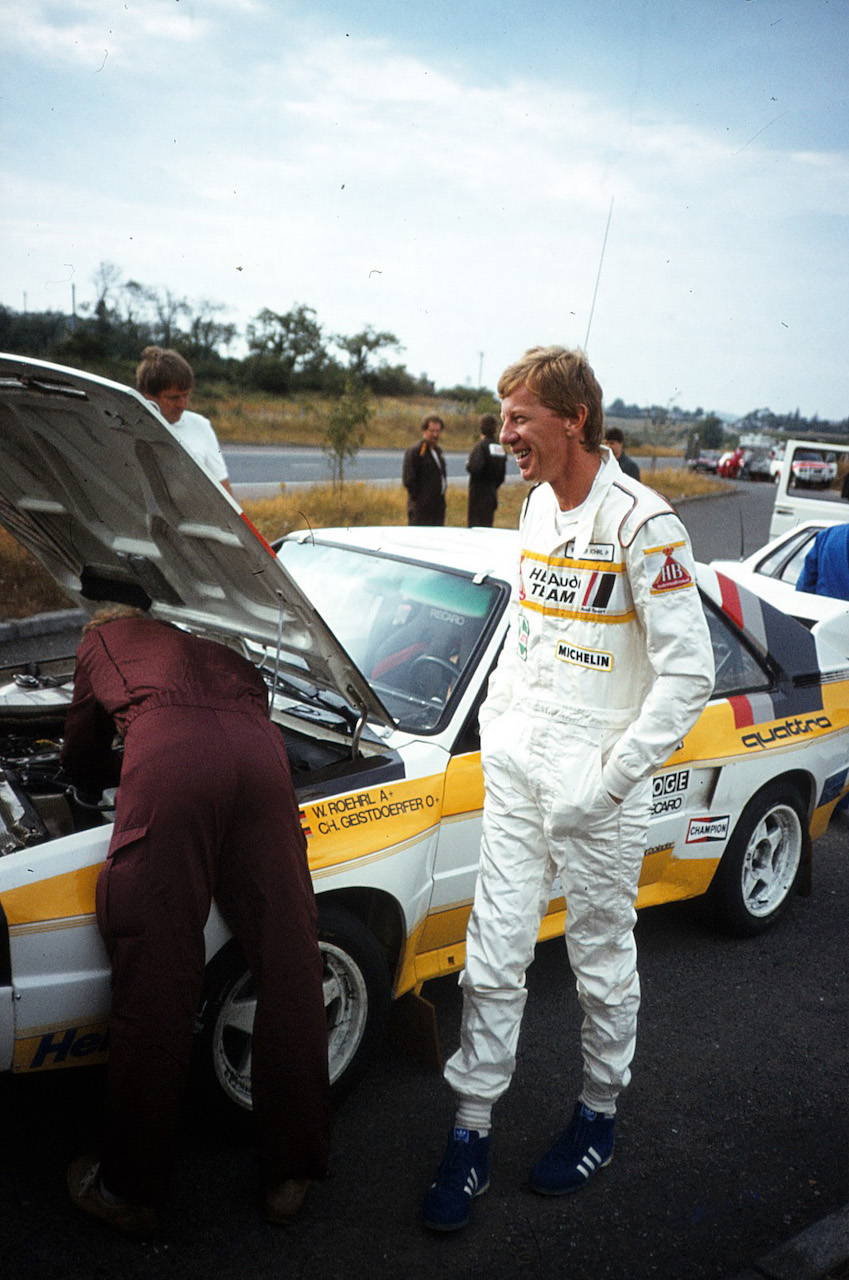Audi dominated rallying in the early to mid-1980s with a wide variety of quattro models. The brand’s rally success can be traced all the way back to 1912, when an Audi Type C claimed victory on the Austrian Alpine Rally. It was the first of three back-to-back triumphs at the event for the Type C, and company founder August Horch played a crucial role behind the wheel during this famous hat-trick of wins.
Fast-forward to the modern era: when Audi began rallying in 1978, it was not with the all-wheel-drive quattro, but with the front-wheel-drive 80 model. This was the perfect way to get the team match-fit for the arrival of the quattro and a full assault on the World Rally Championship (WRC) in 1981.

The original quattro – or ‘Ur’ quattro, as it is known in Germany – was initially rallied under Group 4 regulations in 1981. The first Group B quattro appeared in 1983 and was known as an A1 quattro, with the more powerful A2 version following soon after.

All three versions of the quattro were rallied successfully by the Audi UK team. Here, five former members of the Audi UK Rally Team recall how it changed the world, and we take a look back at the numerous iterations of the quattro rally car.
Harald Demuth – Rally driver

Two-time German Rally Champion Harald Demuth helped develop the quattro, campaigned Group B and 80 versions in the UK and drove an Audi 100 quattro up a snow-covered Finnish ski jump in the famous 1986 Audi television advert:
I was driving for Toyota in the German Rally Championship when I had the choice to sign for Audi or Volkswagen for the 1979 season. Volkswagen had an excellent record with the Golf, but Audi had no presence in rallying. However, there was a lot of whispering behind hands that Audi had something special waiting in the bush, as we say.

To gain experience of the sport, Audi began rallying a front-wheel-drive 80. We were telling everyone how good that car was, but what we couldn’t say was that we were developing the quattro, which was just light years ahead of the 80. We tested an early quattro all-wheel-drive system in an 80 bodyshell.
On the 1982 RAC Rally, I was lying behind Hannu Mikkola in a quattro. OK, the gap was quite big, but I was on course to finish second. Then I had an off on the last day and ended up fifth. David Sutton, who was running the Audi UK rally team, came over and asked me if I would drive for him.

Over the years I drove the Group B quattro and the 80 quattro in the UK. There was a massive difference in the performance, of course. But the handling and the feeling in the corners was very similar thanks to the all-wheel-drive system.
I also won the German Rally Championship twice in a Group B quattro. I called my car Christine – after the Stephen King book and film of the same name about the 1958 Plymouth Fury that just kept rebuilding itself and could never be stopped. I’d spin off the track and go through a ditch, there’d be a big bang, and I’d think, “This is it – I’ve done it this time!” But my quattro would just keep going, and later when I had a look in the service halt, there would only be a little scratch.
David Ingram – Marketing and Public Relations Executive

When the Audi quattro arrived in 1980, it made a huge impression on David Ingram, who had joined the company two years earlier:
I remember first reading about the quattro in the motoring press – this 200-horsepower, turbocharged, five-cylinder, four-wheel-drive coupé – and I thought wow, this sounds like something else. Then I saw the pictures from Geneva – I was too junior at that time to go out to the motor show. However, I was put in charge of supervising the UK launch, which involved hoisting the car 100 feet up in the air to the top of Kensington Roof Gardens in London.

The first time I got to drive the quattro was amazing. The characteristics of that five-cylinder engine as the turbocharger came in, and the burble as you came off the accelerator – it was just so exciting.

And then the rally car arrived. I remember watching it on the 1981 RAC Rally – Hannu Mikkola rolling on the first night and then tearing through the forests to win by 11 minutes. Such powerful images come back to me. The following year, when we started our own Audi UK rally team with David Sutton, was like a dream.

Suddenly I was working with all my heroes, like Stig Blomqvist, who won the British Rally Championship in a quattro in 1982. It makes me misty-eyed now just thinking about those days.

It was a spectacular era for Audi, and it enabled the company to emerge from relative obscurity in the UK. Plus, it coincided with us starting to work with BBH, the Bartle Bogle Hegarty advertising agency, and adopting the Vorsprung durch Technik slogan.
The quattro was an awesome road car and an all-conquering competition car. It was a powerful statement, and there’s no doubt it contributed significantly to making Audi what it is today.
Phil Short – Co-driver

Yorkshire-born co-driver Phil Short was the first Briton to compete and win in a rally quattro:
Björn Waldegård and I won the Welsh Rally in the Audi UK team in the first-generation Group 4 quattro in 1982. It was unbelievable to sit in that car. In those days we were used to Ford Escorts, Vauxhall Chevettes and Talbot Sunbeams with 240PS and rear-wheel drive. Suddenly we had 330PS with four-wheel drive – and the most staggering performance.

By the time I co-drove Hannu Mikkola on the 1984 Scottish Rally in a Group B A2 quattro, we were up to 400PS. The car was so good. It was an incredible feeling to sit on the start line and know that, unless something went wrong, you were probably going to win. Which we did, by six minutes.
I don’t know how much power the short-wheelbase Sport S1 E2 had when I co-drove Walter Röhrl on the 1985 RAC. I did ask, but the engine guy wouldn’t tell me. It was well over 500PS, anyway. It was Formula 1 technology in the forest. When that thing left the start line, it was like a rocket ship. It made your head spin until you got used to the way the forces were working on your body. It was frightening at times. We crashed out, 80 metres down a Welsh mountain, and I remember thinking that the cars cannot go on like this.

With the switch to more production-like Group A cars in 1987, David Llewellin and I joined the Audi UK team to campaign the normally aspirated Coupé quattro. Suddenly we were back down to 190PS. On the first test, we looked at each other and laughed because it felt so slow after Group B. But it got better. We had some great times in it, winning the Scottish and Cyprus rallies.
Graham Rood – Route Co-ordinator

Every rally team needs a co-ordinator to make sure cars, mechanics and service vehicles are in the right place at the right time. In the Audi UK team during the successful 1980s, that person was Graham Rood.
My job was to make sure that from the moment the car left the workshop until it won the rally, everything went right – that was the theory anyway. It involved creating a detailed route plan and schedule for the rally car, the chase car that would follow it, the management car and the service vans, which I would then go through with co-drivers.
On a five-day event like the RAC Rally with 65 special stages, there would be 300 tyres to look after and maybe fifty service halts to arrange. There’d be fierce competition from all the teams to find farmers who’d let us use their yards to patch-up the cars in the middle of the night. But at the same time, there’d be great camaraderie too; we all knew each other, and we’d help each other out.

Chief mechanic Ron Lumley and I would follow the rally car in an Audi 100 Avant. It only had front-wheel drive at that time, but it was a great car, it soaked up a lot of punishment, and there was plenty of space for spare parts. We were all navigating on OS maps – no sat nav in those days.
One of the most staggering performances was when Walter Röhrl and Christian Geistdörfer came to do the 1984 Ulster Rally in the short-wheel-base 500PS Sport S1 quattro. All the other drivers had been there for days recceing and making pace notes. But Röhrl just wanted to go out for a couple of hours in the dark. He said “OK, I know what these roads are like now,” and he was good to go.

That car was incredible. All the other top drivers would come down and watch it leave the start line. It just squatted down at the back, and with the turbo power and quattro grip, it flew.
Röhrl was up through the gears into fifth before it was out of sight. He was 2.3 seconds per mile quicker than the others and won by four minutes. But as always at Audi, it was a team effort, and everyone played their part.
Norman Gault – Mechanic

Having worked as a mechanic with the Audi UK rally team during the 1980s, Scotsman Norman Gault helps keep the Audi historic quattro road and competition cars in fine fettle today.
The Audi UK quattro rally cars were built by Audi Sport in Ingolstadt, Germany. But when we got them, we didn’t just put them on a trailer and head off to a rally. We modified them to make them easier to work on when we were stuck out in a wet forest.
For example, the cars had six bolts holding each driveshaft on. We took three of the bolts off and replaced them with dowels. We modified things like the exhaust mountings, too, so we could get the prop shaft off quicker and change the gearbox faster. We could do that in 20 minutes. On a modern rally car, of course, it’s a lot quicker, but that time was quite phenomenal back then. And the German team adopted our modifications on their later cars.

Our most potent car was the Sport S1 that we ran at Shelsley Walsh hill climb for Hannu Mikkola in 1986. Audi Germany told us to break the course record – whatever it took. We boosted the engine to just under 700PS. It was astonishing. I have never seen a car leave the line so fast in my life. Hannu could barely change gear quick enough. We broke the record in practice, broke it again during the first run, and then again during the second run.
These days I help look after Audi’s heritage cars. We’ve got a Group B S1 E2 quattro, and when Michèle Mouton came to drive it up the hill at Goodwood, her eyes got so big behind the wheel – she wanted to do everything at maximum attack again, like the old days. All the drivers we worked with – Hannu Mikkola, Michèle Mouton and Stig Blomqvist – were fantastic, and we still have good times when we get together.

The Audi UK team withdrew at the end of the 1988 season, returning to the rally stages in 1993 with a Group N Coupé S2 quattro for Shell Scholarship winner Jonny Milner. The Yorkshireman scored an impressive fifth place overall in the road-going-specification car on the Pirelli International Rally.
40 years on the Audi quattro has still got it


